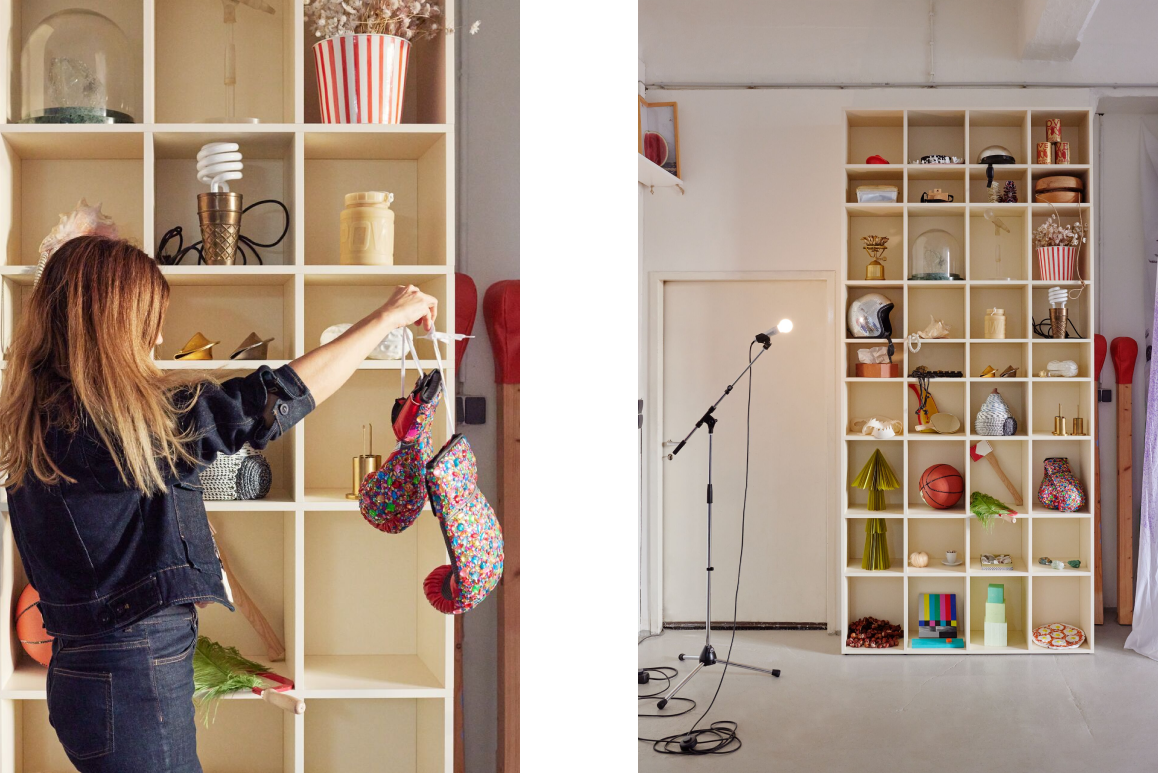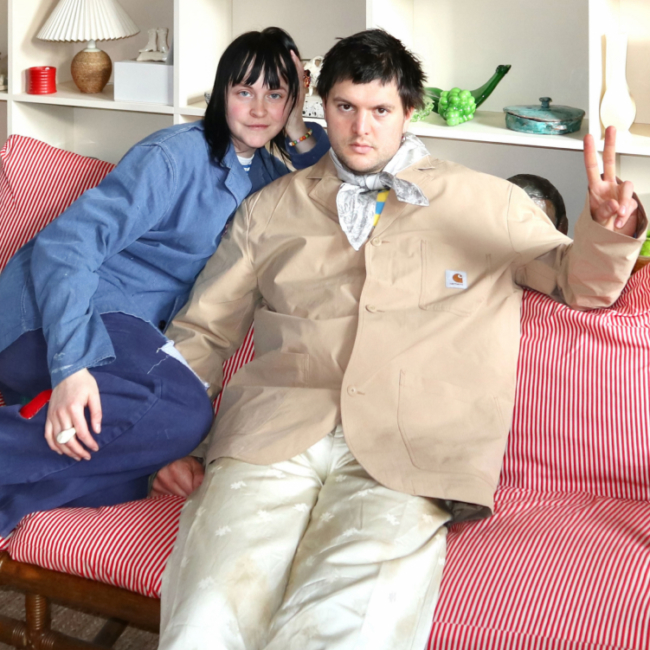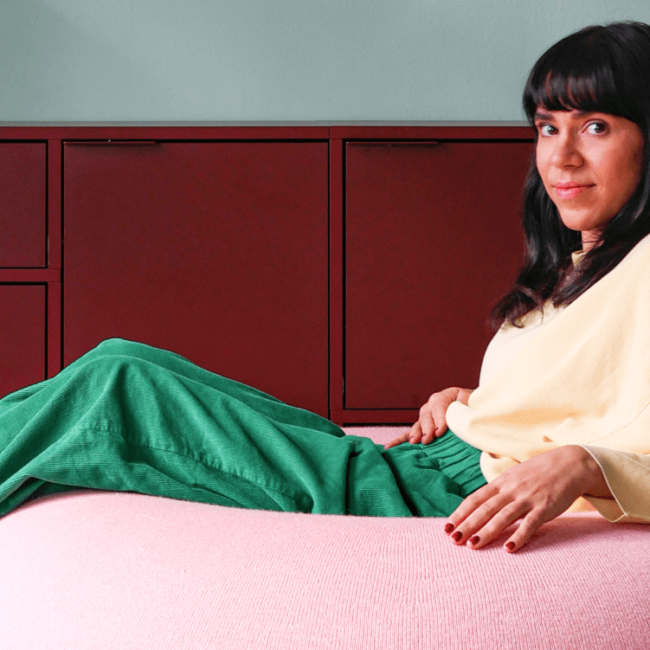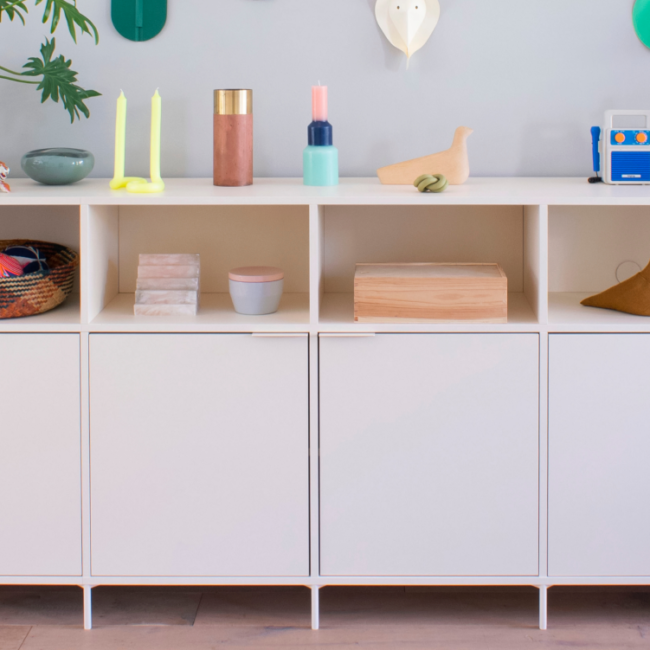January 12, 2023
Staying inspired by letting go: in conversation with Sarah Illenberger
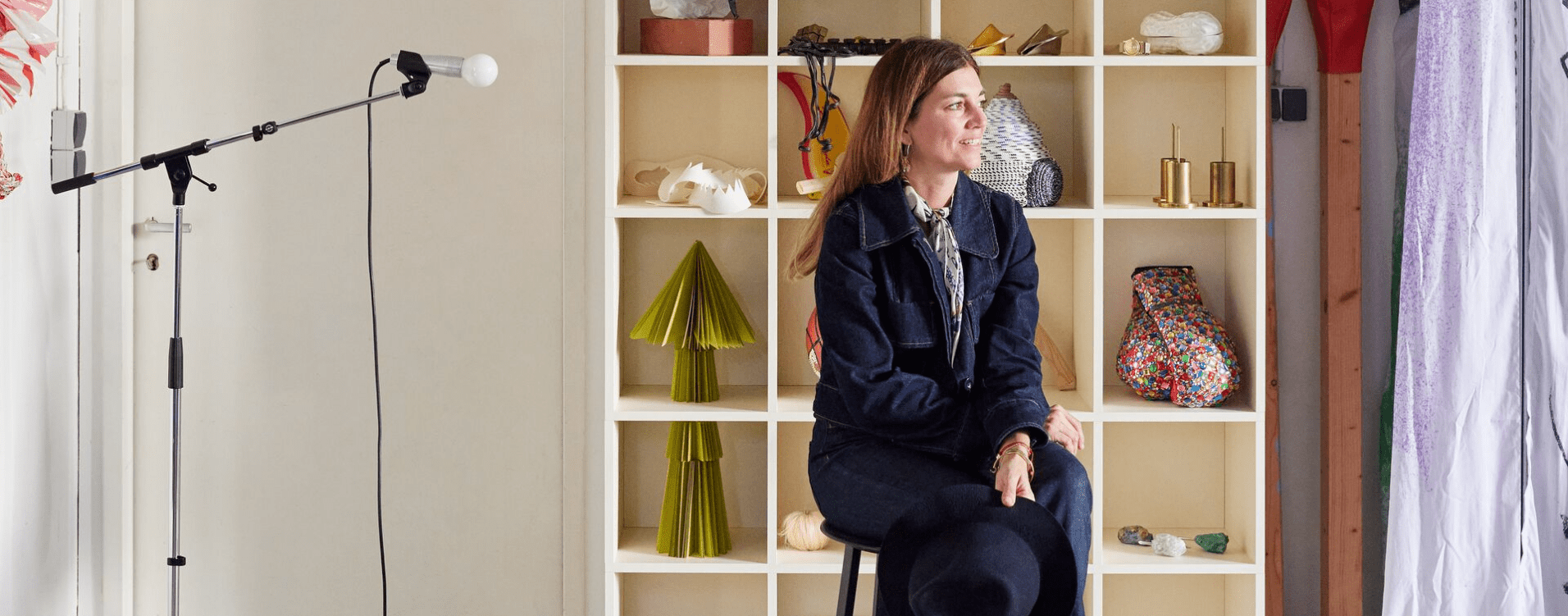
Looking through Sarah Illenberger’s archive, we are stunned by her never-ending imagination. Expressing her creativity through illustration, design and a love for what’s tangible, the Berlin-based artist gives new meaning to everyday objects, and in doing so, encourages us to see the world through a more colourful and surrealist lens.
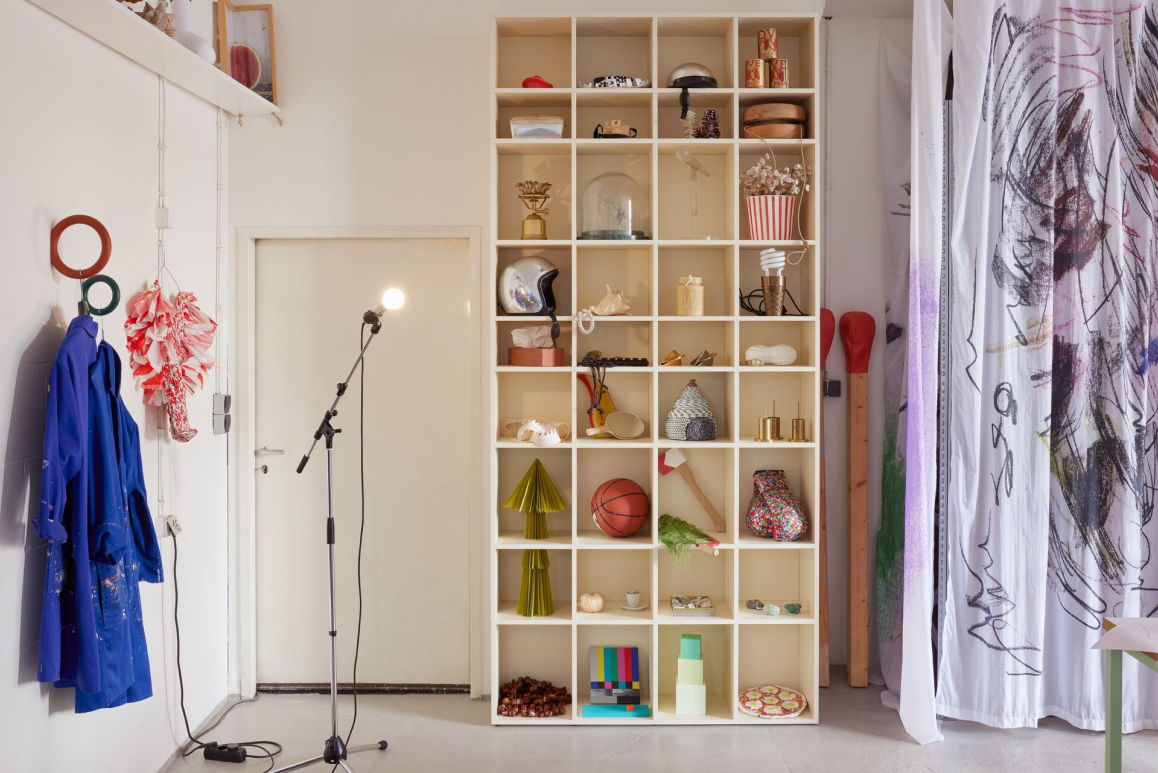
A dress made out of vegetables, a camel dressed in party wear, a chestnut bag and a hairy apple: Sarah Illenberger’s world is a fun one. Throughout her career, Sarah has produced an astonishing amount of work, using all kinds of materials to develop her vision.
An established artist, celebrated for her charming wit and fantastic taste, Sarah’s creativity is coveted by big brands such as Hermès, and scent house Diptyque, and she has recently collaborated with Kvadrat, the iconic Danish textile company, to create a limited-edition print.
We had the pleasure of visiting Sarah at her studio in Berlin, where we talked about her background, her new Tylko, and how staying curious, but also learning to let go, has kept her inspired to create new work.

Hello Sarah! What an honour to meet you. You have such a beautiful imagination. Can you tell us a little about your background, and how it has shaped your work along the years?
Well, my mother is a jewellery designer and my father used to run a restaurant, and their work was right next to each other, so I was always hopping between these spaces, which were like my playground. And so I learnt to love diamonds and gold, but also discovered the playful beauty of food — I think this is where my first foundation, my origin, began.
After school I studied graphic design at Central Saint Martins and I specialised in illustration, because I had the feeling that’s where I would get the greatest creative freedom to work visually, less typographically, etc.
I think what’s also been very important in my work is my urge to collect everyday things, objects, and to use different materials. All of this, alongside my love for photography and everything that’s analogue and tangible, has brought me to where I am now.
You’ve collaborated on such an impressive variety of projects, experimenting with different materials, techniques and mediums — basically, your creativity seems endless. How do you come up with new ideas so consistently?
I do think it’s a muscle that’s trained to see the world in a certain perspective. And you have to be receptive and sensitive to small things that lead to bigger ideas. I think I have a very permeable surface around me, so a lot of things come through. I think I see more than other people do. At least I see a lot of things, which is sometimes good and other times not such a nice trait. I also think it’s a matter of disciplining oneself to filter the good ideas and to pursue them further.
I do realise that if I concentrate too much on coming up with new things, it’s sometimes contra-productive. It is important to let go — when I bike, or I’m travelling, just hanging around, I think that’s when the ideas I was trying to make sense of get released.
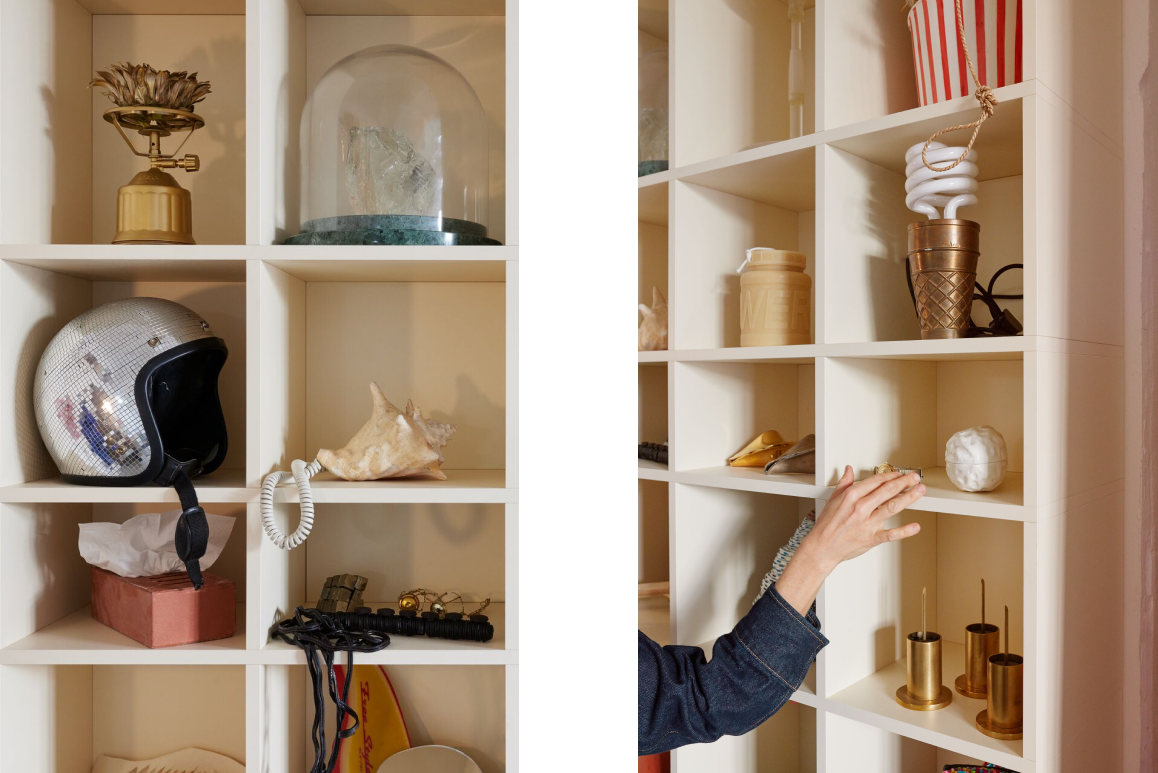
We’re curious, how do you find the time and headspace to produce new work? In other words: what’s your secret to keeping energised, balanced and inspired?
Travelling, getting out of my comfort zone. But recently, I’ve also realised that books, poems and theatre — the whole literary aspect — is quite inspiring when creating new work. That means working with thoughts of somebody else, but then turning that into visual poetry: I find this is a big space to be challenged and conquered.
Anything other than art and design are important for me to dive into. I think that crossing between disciplines, including spiritual health, meditation, religion, things that are not directly connected with design, are what actually feeds my energy to create new things.
Words such as surrealist, cheerful and humorous have been used to describe your work. How would you describe your visual language, and how do you think this has evolved over the years?
Surrealist, light and humorous sum up my work pretty well. I think I have the talent to take things that are heavy and dark, and transform them into something that can fly.
I’m still in the process of working more from my subconscious, and not being too deliberate, too obvious, and too pragmatic about things. I used to work so much for magazines, and it was actually kind of easy because you’re always working with a text, and you just have to come up with a visual that symbolises the theme. But now that I’m working more on my own ideas and thoughts, I allow myself to go deep into my subconscious and come up with weird conglomerations or visual assemblages — this exercise can be very entertaining and fulfilling.
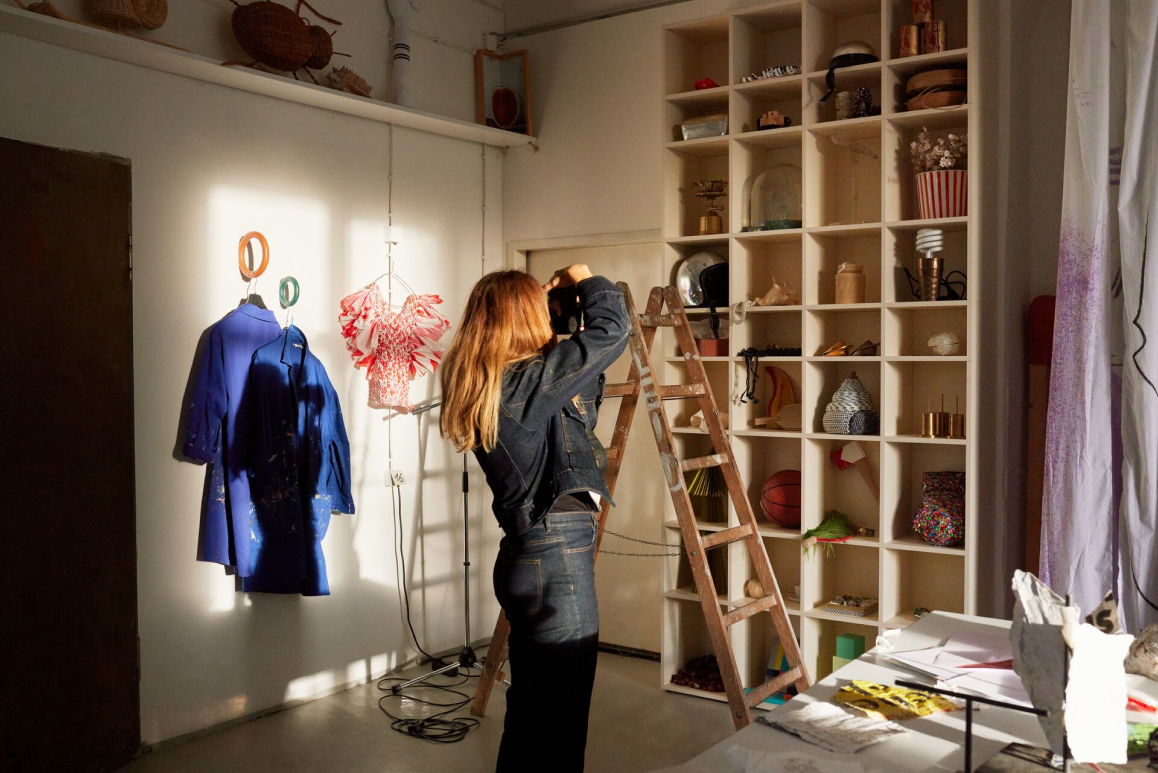
What are some of your permanent and current influences?
My permanent influences: nature, of course — there’s still a lot to discover and see, and it’s never predictable, and that’s the challenge and beauty of it, that it’s always surprising. Walking in the mountains, or on the beach, seeing what the water washes onto the shore, what kind of shapes. Water and woods, water and stones, wind and trees — the relationship between elements is something that inspires me a lot.
As I mentioned previously, currently I’m really digging deep into literature, poetry and theatre. I’m reading a lot of books, letters between authors, and a lot of biographies.
We’re curious about the environment in which you like to work. As storage experts, we must ask: do you like everything super organised, or do you like a bit of mess here and there?
I do try to have a certain structure for my vast material library. I’m not naturally structured and organised, so it’s always a bit of a challenge for me to take a step back and take time to sort things.
As soon as I start working it becomes massively chaotic. When I let go and really get deep into my projects, I lose touch with my surroundings — which is lovely, it’s the moment of flow, but if I don’t have a system that I can always refer back to, I start to drown in the sea of materials, tools, etc, and I become very frustrated. Chaos is important for creativity but it has to go hand in hand with a system that works.
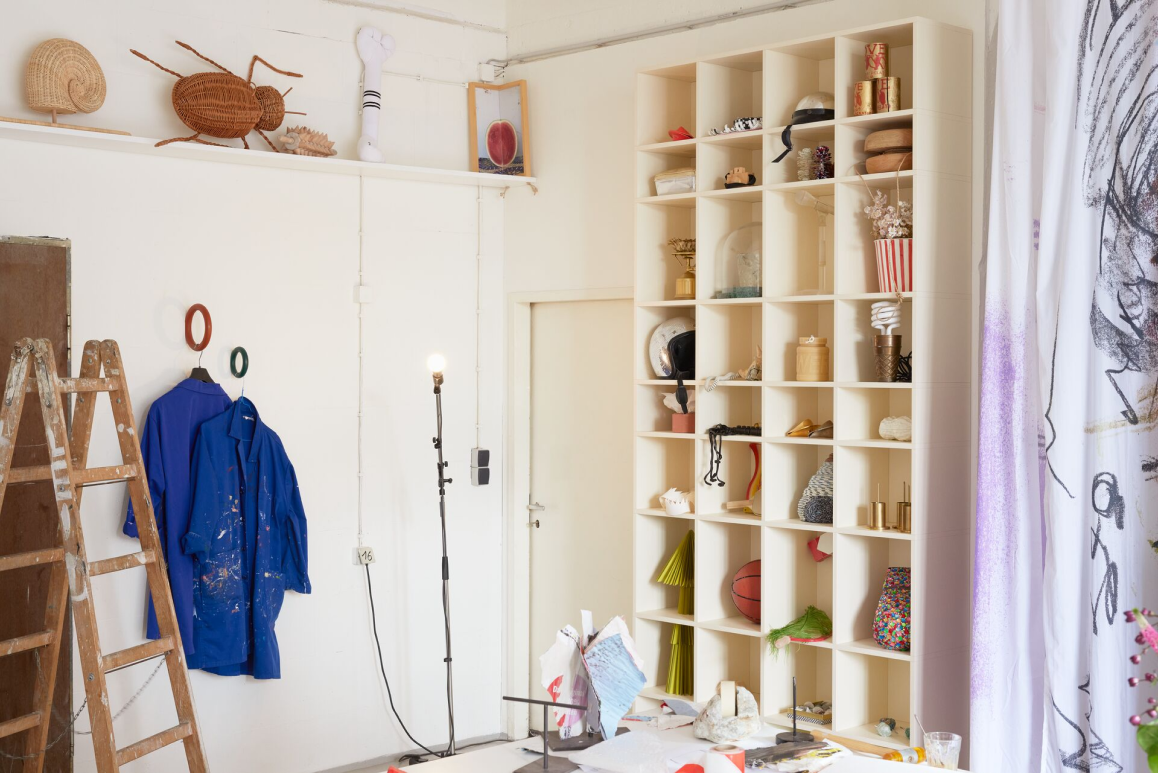
Let’s talk Tylko! Can you tell us what you wanted to achieve with your design?
When I designed my Tylko, it was really important for it to have different formats to get my different-sized objects to fit nicely. My work mostly revolves around creating 3D objects by hand and photographing them, so I needed a shelf that colour-wise was not too dominant — Cotton Beige goes very well with my colourful pieces — and that had different formats to display my eclectic archive.
At Tylko, our mission is to help people create more harmony in every space. We’d like to know, what does harmony mean to you?
Being able to focus on what’s important. If there is harmony, it’s easier to concentrate on things that feel important to see, smell, hear. I think that anything that’s not harmonious is a distraction, which might stop you from letting go and really diving into subjects and themes. A harmonious system is beautiful. I’m generally a person that loves symmetry and I find it important to have a balance in life.
